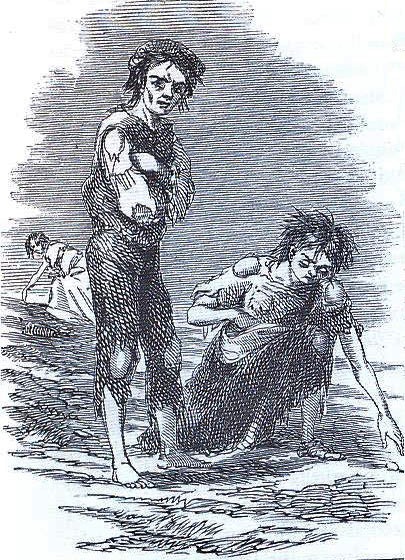It’s hard to imagine actually living through the aftermath of a natural disaster or famine. And as much as we can prepare for a natural disaster, like a flood, drought, earthquake, hurricane, or even a man-made crisis, like war, we can’t control the many wildcard circumstances that come along with it. Surviving a natural disaster is only half the battle, though. The aftermath of a crisis is also a massive concern.
Living through a disaster is scary, but the conditions in which survivors are forced to live afterward can be lethal — especially in regards to food scarcity and famine.
Food access becomes limited after a disaster for a myriad of reasons. In fact, an inability to travel, a loss of electricity, financial hardships, and environmental factors that affect crops are all things that can impede one’s ability to find nourishment during disasters. “When crops or food distribution centers are lost in a natural disaster, there’s a clear impact on the availability of food for the entire surrounding region,” explained nonprofit organization International Community Foundation (ICF).
The ICF went on to say:
But even if a natural disaster doesn’t eliminate fresh sources of food or crops, it can weaken the financial resources, economic means, and access to adequate foods for already-impoverished communities — leaving them with little or no ability to obtain the foods needed to keep themselves healthy.
Access to food is a major concern following any sort of disaster or public crisis.
Even the July 2019 earthquake that shook Southern California with a 7.1 magnitude — which apparently resulted in no reported deaths — left some residents scrambling to find basic essentials like food.
People lined outside of a pizza chain because its one of the very few places in Ridgecrest open today. Some places in the City are still without power and basic essentials are difficult to find. pic.twitter.com/tnK3Lyp0tC
— WeatherNation (@WeatherNation) July 7, 2019
And as mentioned, famines are caused by factors beyond natural disasters, too. Economic crises, war, and environmental issues can also result in dire and tragic situations, leaving countless people desperate for food and water. And, in some cases, people resort to eating strange, unappetizing, or straight-up gnarly things.
The Department of Homeland Security’s disaster preparedness site advises people to stock up on certain foods.
Things like ready-to-eat canned fruits and veggies, protein bars, dried cereals and fruits, nut butter, and canned juices can help you prepare yourself for survival in case of a public emergency. But not everyone has the means or opportunity to sufficiently prep before a disaster. And in cases of economic crisis or political upset, there’s little to be done once your emergency supply dwindles.
Given these circumstances, some people turn to famine foods.
The number of extreme weather events has doubled since the early 1990. More than 80% of hungry people live in disaster-prone areas.
— World Food Programme (@WFP) July 5, 2019
Disasters drive hunger. We cannot afford to wait for an emergency to strike. Here's how we prepare 👇#ClimateChange pic.twitter.com/lB9eppwKS5
Throughout history, the types of these accessible famine foods varied.
Some of them are pretty standard, like sweet potatoes. But other survival foods (like tarantulas) denote the intensity of people’s desperation. Some of these examples are more extreme than others. But desperate situations call for desperate measures. Consequently, people do what they must in order to survive, including eating dogs, tarantulas, and a whole lot of plants that aren’t normally considered food sources.
Check out some of the survival foods people ate during natural disasters and famines.
Dogs, Iguanas, and Monkeys

It’s hard to imagine eating the flesh of man’s best friend.
But soldiers in the World War II Battle of Bataan apparently had no choice. The American and Filipino soldiers both faced severe famine and desperation while they fought the Japanese military in the Philippines. “The search for food was his constant pursuit; hunger and disease his deadliest enemies,” wrote author Louis Morton in his book The Fall of the Philippines. “Literally, [they] faced starvation. When measured against this terrible and inescapable fact all else was of secondary importance.” Their food situation quickly turned critical.
As the food supply dwindled, nutrients became so scarce.

The soldiers reportedly resorted to eating dogs as well as iguanas and monkeys to survive. Additionally, the soldiers ate the flesh of iguanas and monkeys, some of mankind’s closest primate relatives. “The Americans soon learned that hunger is a great leveler and sought the meat of dogs… iguanas, and monkeys as avidly as their native comrades-in-arms,” Louis Morton explained further.

Tarantulas

We can barely handle looking at tarantulas.
But in war-torn Cambodia, these arachnids provided many people with food. During the decades-long Cambodian humanitarian crisis of the mid-20th century, food was scarce. People reportedly started eating anything they could possibly catch in order to survive. A variety of insects comprised a major part of their “famine food” menu. But, as it turns out, cooked tarantulas became a signature Cambodian specialty.
Yes, you read that right.
Would you sink your teeth into a deep-fried tarantula? 👀 pic.twitter.com/H9notCy5FG
— Insider (@thisisinsider) July 3, 2019
Grass And Tulip Bulbs

We had no idea tulip bulbs were even edible.
But as the Dutch people learned during the “Hunger Winter” of the mid-1940s, tulips can provide nutrition. They don’t necessarily taste good, though. According to Environment & Society, millions of people in the Netherlands felt the negative effects of this disastrous famine. Approximately 22,000 people died. A number of factors reportedly caused the famine, including an extremely harsh winter and subsequently suffering crops. Things escalated, however, after a retaliatory embargo on food transport and imports from the Nazi party in power.
In fact, because of the rations, the Dutch people lived on 400-800 calories a day.

The flower remnants and grass supplemented their meager diets. Fresh tulip bulbs apparently taste sweet, but the bulbs consumed during this time were bitter and dry. They offered nutrition, though, and happened to be one of the only edible options available. Newspapers even published recipes for tulip bulb dishes to help make the strange culinary ingredient more palatable. And while grass is technically edible, it’s not ideal for the human digestive tract.
Algae

Algae sounds less like something you want on your plate and more like something you want to avoid growing in your fish tank, right?
Some people, however, weren’t able to be so picky. During the Great Famine of Ireland of the mid-1800s (which was caused by a massive potato blight that destroyed the crops and caused approximately one million deaths), many coastal residents resorted to eating algae. Other forms of seaweed helped keep them alive too. “As is perhaps unsurprising in a land with such a high craggy-coastline-to-country ratio, the Irish have a long history of eating seaweed,” explained NPR.
And while algae might sound like an odd addition to one’s diet, it’s actually quite nutritious.

NPR also noted, “Seaweed was eaten to keep alive during the Great Famine of the mid-1800s, and for many in Ireland, it never quite shook this association as a vestige of an older, poorer time.” So despite its nutritional value and regional availability, algae and seaweed still remain famine foods for many Irish residents.
Processed Foods

After a natural disaster, many organizations and government groups offer food to the affected populations.
But unfortunately, that food isn’t always nutritious. In fact, processed food is a pretty common post-disaster staple. Nutrition investigator Uriyoán Colón-Ramos commented on this, suggesting that nearly 10 percent of some disaster aid foods are unhealthy. In one Puerto Rican aid center Colón-Ramos visited, the workers distributed chips, candy, and other snacks full of sugar and unhealthy fat.
It’s good for organizations and communities to provide resources, but the food should be more nutritious.
The FEMA "meals" my brother received today... #HuracánMaría pic.twitter.com/X7eXcFmDD9
— Sujei =) (@sujeilugo) November 10, 2017
People may assume that those dealing with life or death situations can eat anything. But empty calories from processed foods are not completely beneficial. In fact, malnutrition is real. And it’s concerning to see people left with no choice but to consume food with empty calories and an exorbitant amount of processed sugar, sodium, and more.
Sweet Potatoes And Bananas

No shade on sweet potatoes or bananas, but no one wants to eat these foods day in and day out.
During the massive tsunami and earthquake that ravaged Indonesia in late 2018, thousands of people lost their homes. Many of them struggled to find food to survive. Some affected citizens relied on sweet potatoes and bananas to satisfy their hunger. The produce was nutritious, but eventually, the supply ran low, leaving many people hungry.
“Everyone is desperate for food and water,” explained aid worker Lian Gogali of Indonesia’s post-disaster scene in an interview with Al Jazeera.
Thousands of people left stranded by the Indonesian tsunami are now running out of food.
— The Yorkshire Post (@yorkshirepost) October 9, 2018
Here's how you can help https://t.co/cSO73odGg8 @decappeal pic.twitter.com/SyL1QjhHmD
People had no choice but to come together and share what little resources they had available for the sake of survival. “What we’re relying on right now is food from farms and sharing whatever we find like sweet potatoes or bananas,” said Ahmad Derajat to Al Jazeera. Derajat also added that survivors looked for “food in fields and orchards.”

